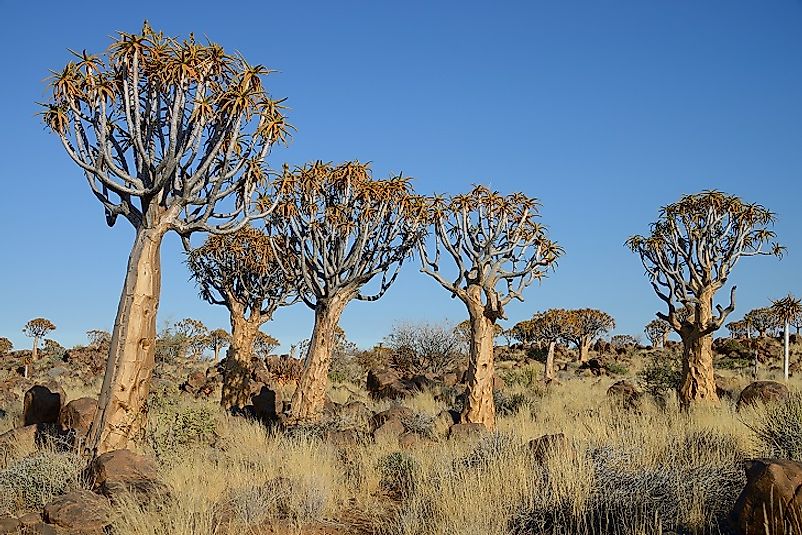Quiver Tree Forest - Unique Places In Namibia

5. Description
The Quiver Tree Forest area is located at some 14 kilometers northeast of the Keetmanshoop, which is situated on the road to the Koes. This forest area is the main tourist attraction to the tourists in the southern part of Namibia and is also known as the Kokerboom Woud in the Afrikaans language. This forest comprises about 250 specimens of Aloe Dichotoma, sometimes simply referred to as Aloe trees, which the bushmen used the branches for making their quivers to hunt and wage war with. It is also known as the national plant of Namibia and is the best-known desert plants in southern Africa. It has a stout stem, which may grow one meter in diameter and has a thick yellowish bark. Its branches are smooth and are covered with the thin sort of layer of the whitish powder, which helps in safeguarding it from sun’s rays.
4. Historical Role
The tallest quiver trees found within the Namibia area are almost two to three centuries old, and it was declared the national monument on June 1, 1995. The forest area also has the Giant Playground, which has a pile of dolerite rocks. Some of the Aloe trees that are found in the area are said to be between 200 and 300 years old, and the Quiver tree name comes from the Pliable bark. The tree also has another name known as Kokerbome, and they began to bear flowers when they are 20 to 30 years old. This is a home to ancient giant trees as they comprise the largest aloe trees throughout the world and also have a rich floral heritage. For the past several thousands of years, the trees produce yellow flowers for three months annually.
3. Modern Significance
The main attraction of this Quiver Forest area is the spring flower festival, which is a rare sight to see as they occur in May, June, and July. It is a famous location among the photographers and the botanists and the foreign visitors too as one can find a farm house to live among the quiver trees. The road to this forest is also good as it is a gravel road, and even the city of Gannabos is a sight to see. The forest is located in the hills and valley bottoms, and is a unique area as hundred of Aloe Dichotoma trees are clustered together.
2. Habitat and Biodiversity
The Quiver Trees occur on the desert or the semi-desert areas, and in the wetter parts of South Africa as well. One can also find them in gardens. The Quiver Tree Forest habitat features include Blunt-Nosed Leopard Lizards, Kurdish Wheatears, Pharaoh Eagle Owls, and Bar-Tailed Larks. The other animals found here include Guanacos, Tamarisks, Dama Gazelles, and Caracals.
1. Environmental Threats and Territorial Disputes
The foremost threat to Quiver Tree is from the global climatic change. With the rise in the temperature, there is a decrease in the rainfall in the region and adaptability of the plant and animal species in this type of climate is a difficulty. Many die-offs of wildlife have also occurred in the equatorial regions, whereas these trees are still reproducing well in the higher altitudes.







